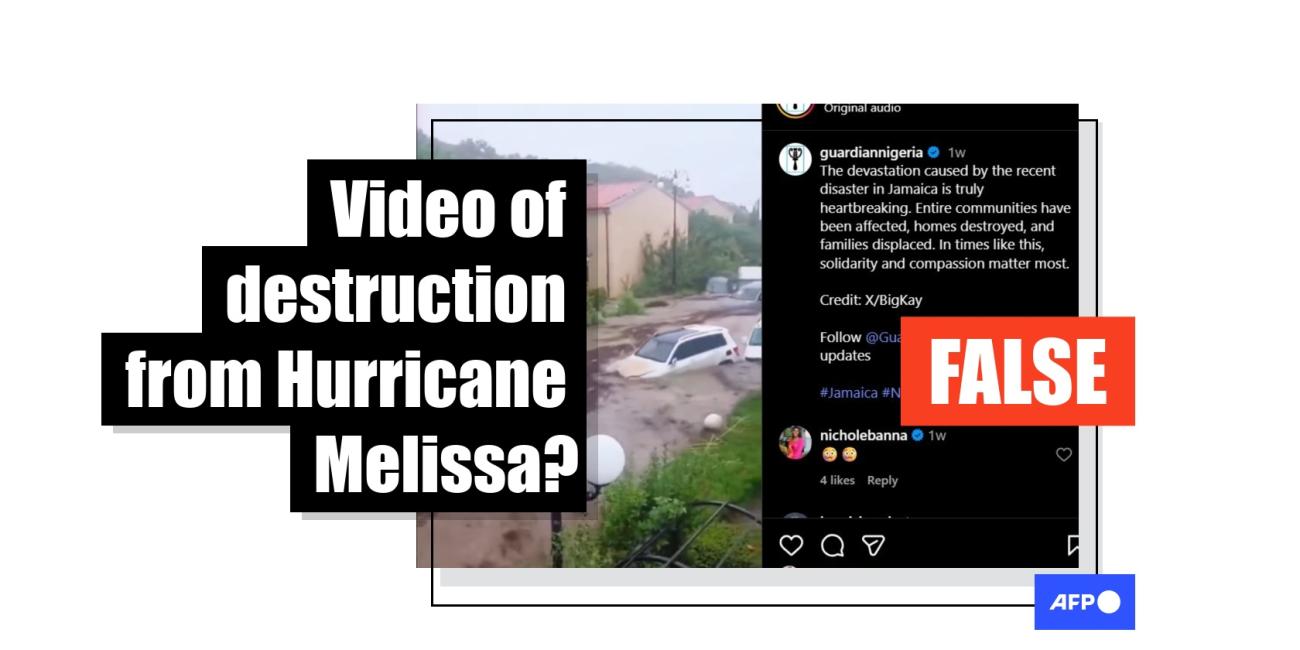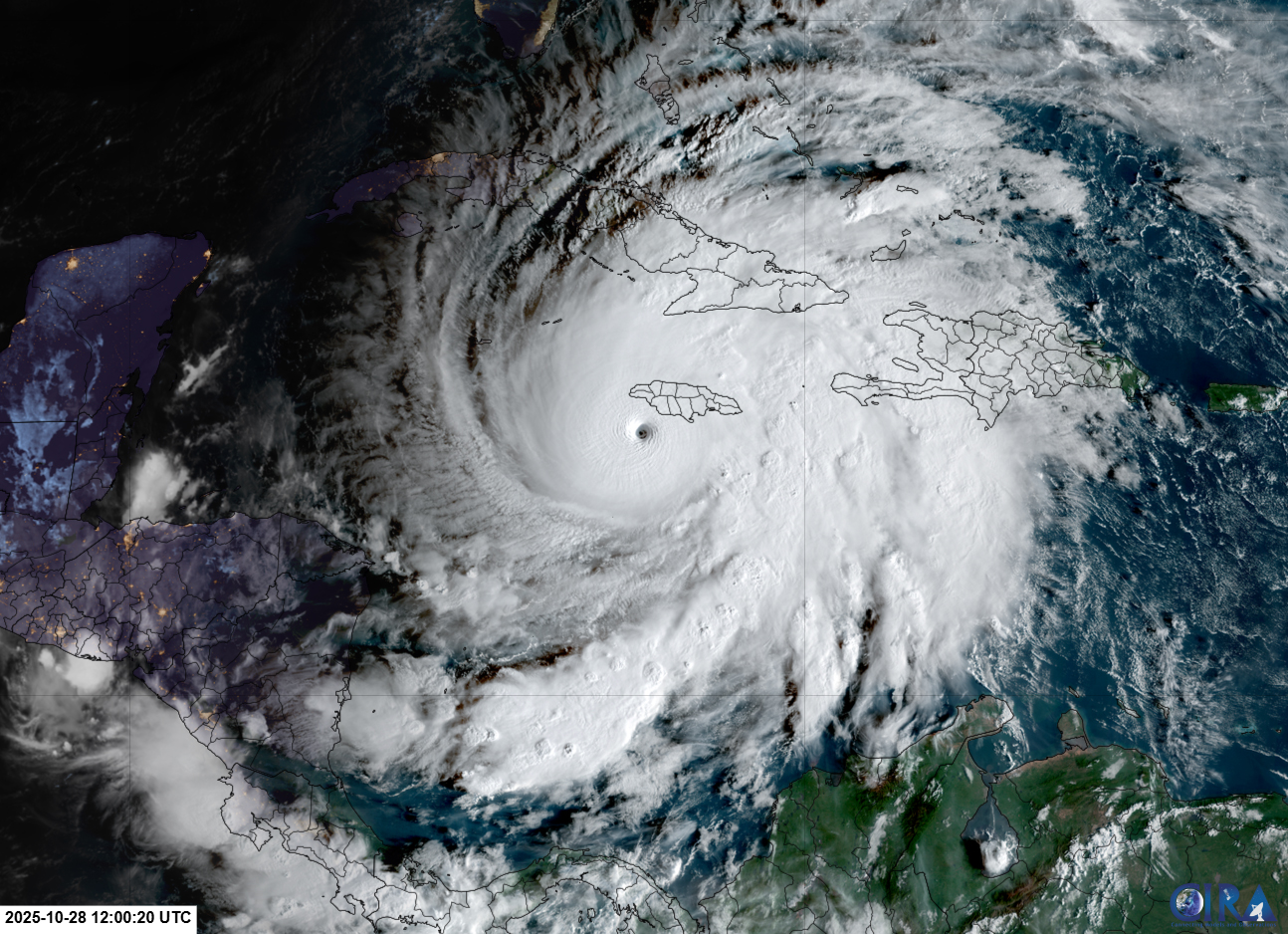
'Weather weapon' conspiracy theories pushed to explain Hurricane Melissa
- Published on October 29, 2025 at 22:09
- 4 min read
- By Manon JACOB, AFP USA
Meteorologists were warning about the dangers of Hurricane Melissa's intensity and crawling slow speed ahead of its powerful landfall in Jamaica on October 28, 2025, but online conspiracy theories classing the deadly storm as a geo-engineered phenomenon are false. Despite its uniqueness, experts told AFP that Melissa remains a natural disaster, with climate change likely contributing to its rapid intensification.
"Meet Melissa… she is a geopolitical weather strike weapon dressed as 'natural disaster,'" said an October 24 post on X.
"You're not looking at climate btw. You're looking at a signature-controlled atmospheric operation targeting Jamaica's food sovereignty, economic fragility, and international dependency leverage."
As the storm made landfall in Jamaica October 28, another post on X claimed: "WHEN METEOROLOGISTS CALL IT 'UNREAL,' YOU KNOW IT'S NOT NATURAL."
The post concluded: "No storm strengthens like this without help."
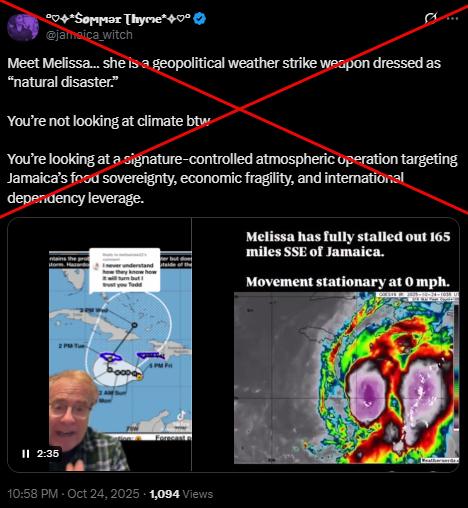
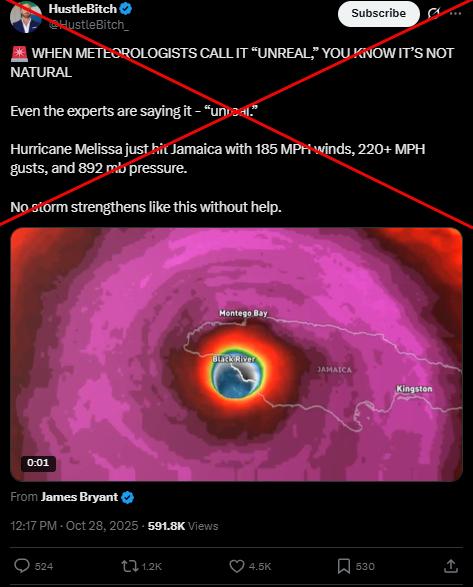
Similar conspiracy theories alleging that the catastrophic storm was geo-engineered and government-steered spread elsewhere on social media, with some additional posts sharing an old patent for man-made hurricanes that a previous AFP investigation found had been abandoned.
The Category 5 hurricane struck Jamaica October 28, with ferocious sustained winds clocking 185 miles (300 kilometers) per hour before it was downgraded to Category 3 as it steered toward Cuba.
At least 20 people have been reported dead from the storm's wrath, as of the time of publication.
Despite the theories online, scientists insist that no man-made technology could engineer the storm that churned through the Atlantic basin.
"It is absolutely impossible to create hurricanes by means of weather manipulation," Imperial College London climatologist Friederike Otto said October 28 (archived here).
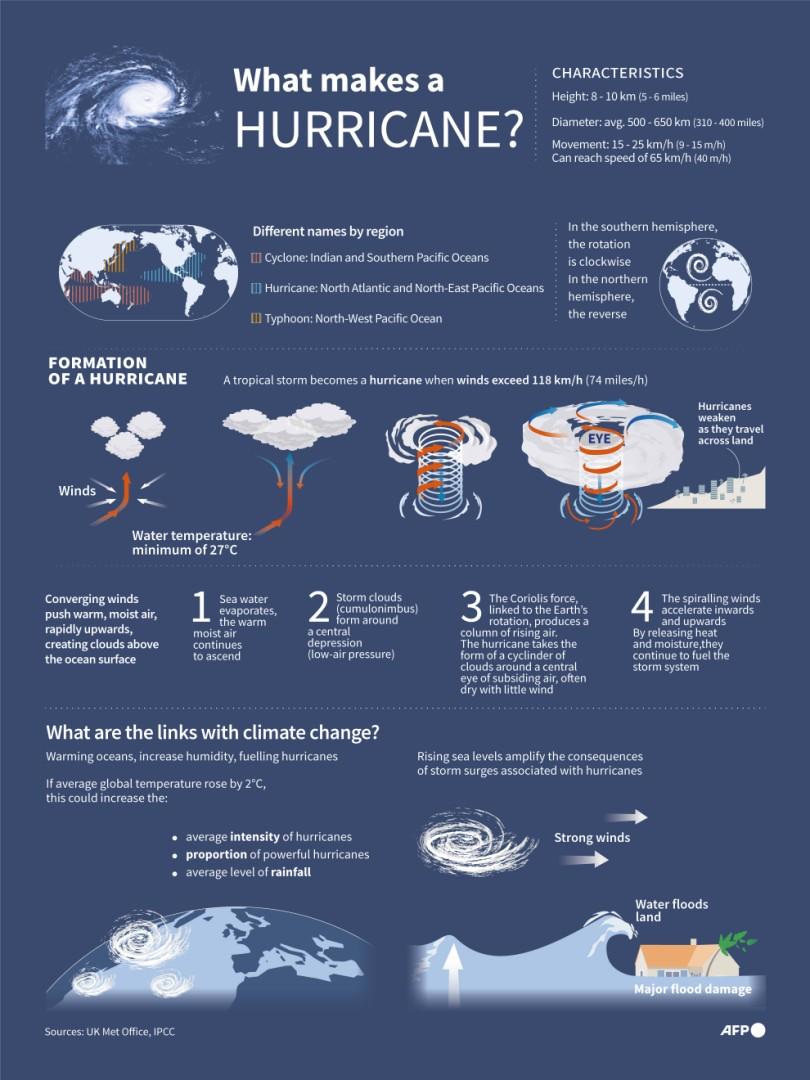
Leon Simons, another climate researcher, pointed AFP on October 28 to a 2012 research paper that said a "large hurricane" can release "an enormous amount of energy" equivalent to "250 times the world's average electrical energy production" (archived here and here).
Similar, more recent calculations published on the US National Ocean Service's website have estimated that one hurricane's winds can "churn out about half as much energy as the electrical generating capacity of the entire world" (archived here).
The same storm's cloud and rain formations can release 400 times that amount, it adds.
"Grasping the enormous amount of energy associated with hurricanes helps to understand how ridiculous the notion of 'weather control weapons' is," Simons said.
'Its own path'
Hurricane Melissa exploded into a Category 5 cyclone on October 27, while moving at little more than a strolling pace -- a dangerous combination, according to meteorologists.
Experts told AFP that while the storm was unique, its development can be explained by natural factors.
Warm ocean temperatures and a stable atmosphere are needed to reach the maximum intensity present in Category 5 systems like Melissa, which tied the record for most intense hurricane to make landfall, matching the 1935 Labor Day Hurricane that devastated the Florida Keys.
Some similar conditions were at play when Hurricane Dorian formed in the Atlantic and devastated the Bahamas, Dakota Smith, a satellite analyst for the Cooperative Institute for Research in the Atmosphere, said October 28 (archived here).
But in Melissa's case, the hurricane picked up speed at landfall.
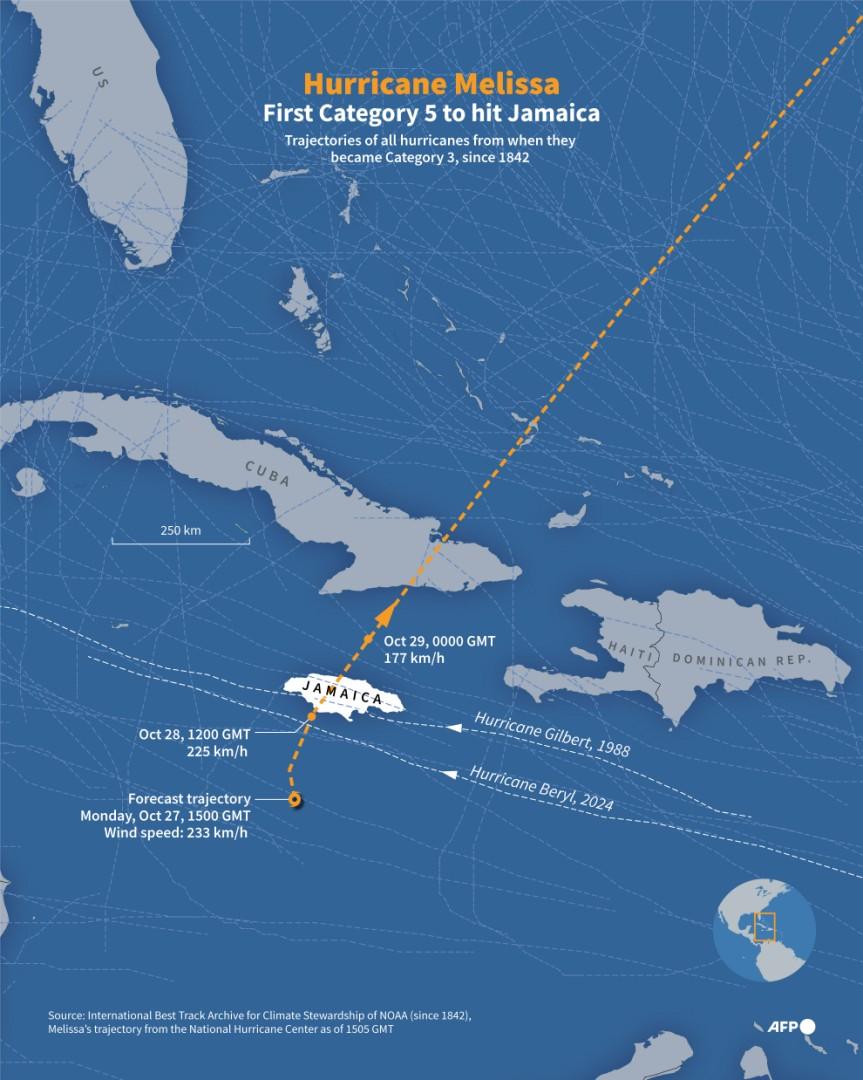
"Each hurricane follows its own path," Kristina Dahl, vice president for science at Climate Central, said October 28 (archived here). "It's important to know that while this path may look unusual, it is entirely expected given the setup in the atmosphere."
Imperial College London's Otto agreed. She said the storm's path is due to how currents in the atmosphere have moved it along (archived here).
Normally, stalling storms tend to die out as they pull up cold water from the depths of the ocean and are exposed to wavy, up-and-down winds in the atmosphere that tear them apart.
Instead, Melissa stalled and intensified, avoiding the usual self-destructing effect in a sign that the water was so warm, and that the warmth ran so deep.
Broad consensus says storms like Melissa are occurring with increased frequency and higher potential for destruction and deadly flooding, a trend researchers have been studying due to human-driven climate change and warmer ocean waters (archived here).
Otto said the intensity of Melissa, as well as the ocean temperatures in the Gulf of Mexico that fueled it, would both be lower without humanity's carbon footprint (archived here).
Simons concurred.
"The real 'weather control weapons' are fossil fuel burning machines that cause heat to accumulate in the oceans through greenhouse gas warming, which hurricanes use to strengthen to these kind of superstorms," he said.
Conspiracy theories asserting that storms are geo-engineered are not new. AFP covered similar conspiratorial narratives after massive storms Helene and Milton in 2024.
Find more of AFP's coverage on tropical cyclones and storms here.
Copyright © AFP 2017-2025. Any commercial use of this content requires a subscription. Click here to find out more.
Is there content that you would like AFP to fact-check? Get in touch.
Contact us


